The ABCD’s of Dengue: A 4 Part Series by Dr. Fernando Senties Nieto (Dr. Chey)
This is the last post in a 4 part series, about Dengue, which originally appeared at blogtorchey.blogspot.com in Spanish on June 2011.
D, Prevention: “de-junking”, water deposits, insecticides and barriers.
We have already addressed of its origins, how it arrives, how it presents itself and which are the dangers. We are missing the most important issue (hence why the title I suggested in the last installment changed): prevention.
As there is no vaccine against dengue virus, prevention focuses in attacking and eradicating the vector (carrier): the aedes mosquito. Attacking it is done in three manners: preventing bites, attacking the mosquito and breeding.
BARRIERS.
As for barriers we refer to the ways we can stop the mosquito from biting. Although a valuable prevention tool, it might be the less important as if the previous ones are correctly done, the mosquito would not appear. It has to do with avoiding the mosquito from reaching our skin (whether to inoculate the virus or extract it from an already sick person) and we can achieve it mainly in to forms: repellents and mosquito screens or nets. Use of repellents is well known; any presentation is valid and depending on every person’s preference, I will only mention that their use muse be increased during mosquitoes’ feeding schedules: dawn and dusk. Mosquito screens and nets keep the mosquito outside and may be used over beds (nets) or on windows and doors.
INSECTICIDES.
The second prevention aspect, concerns killing the mosquito. While the Health Department watches over and sprays over areas where cases have appeared, we should not expect that all mosquitoes will be killed and the problem eradicated. A large number of mosquitoes live inside homes and other locations where the spray cannot reach, therefore it is important that we take care of our own area and use commercial insecticides at home. Frequency thereof may also be determined by observing or not mosquito, however during this season doing it twice a week cannot hurt. We should not forget that certain spots are great hiding places for mosquitoes during the day such as behind furniture, inside closets and under the beds; in general, dark places.
DE-JUNKING AND WATER DEPOSITS.
The third and most important aspect refers to clearing areas from objects that become potential breeding grounds. Remember that the mosquito requires a small amount of water to place eggs and reproduce; if it finds such spaces in our own yards or homes, no matter how many times we fumigate every so often we will see the mosquito back again. Basically any junk could be used by them, from a lid of a jar or a bottle-cap to a bin o bucket, flower cases, open water tanks, a basin and we have even found then in potato chip bags. It only takes 24 hours of stagnant water to make hatching possible; without question the most important issue. First because is a mosquito does not breed, we stop 15 or more from hatching; second, because no matter how many times we fumigate, the mosquito may find a space to hide and reproduce again.
For large stagnant bodies of water such as puddles, ponds, water tanks, storm drains, wells and sewers we have two options. The first is to use temphos or abate, a substance that prevents mosquitoes from depositing the eggs and larvae settling in. Without going into further details, there are several types and mainly act breaking water’s surface tension, thus are the main option for bodies of water that cannot be covered and do not endanger the environment. The second option is to cover water deposits, starting with water tanks and wells placing sturdy and sealed covers; and, when this is not possible or an inflow/outflow watercourse, a screen cover could be used, depending on the case. For large bodies of water, health authorities must be contacted as they have the cost-free temphos or abate distribution and may carry out a better analysis to find the best solution.
This is it so far with the ABCD of Dengue; I hope the information is useful.
This is part of a series of 4 articles, written by Dr. Fernando Senties Nieto. Also known as Dr. Chey, he is a fully bi-lingual, board certified family practitioner here in Cozumel. In addition, he also has a Masters in Hyperbaric and Diving Medicine and Clinical Psychology and Psychiatry. He offers consultations at his private office, the Clinica San Miguel, and will even schedule a house call. For more information, visit his webpage.
This story originally appeared in the weekly Cozumel 4 You NEWS – the island’s number one source of positive information about our island! Be sure and subscribe to the weekly NEWS to find out all the island events!…
______________________________
Una ex yanqui de Connecticut quien llama hogar a Cozumel desde hace más de 15 años. Laura escapó al Caribe hace años, desplazándose de una isla a otra dando clases de BUCEO. Se dedicó a perder el tiempo en Jamaica y finalmente se detuvo en Cozumel para pasar unas vacaciones de 2 semanas que aún no terminan. Convenciendo a sus padres que pagaran una elegante universidad privada, obtuvo su título en Periodismo y Laura crea semanalmente Cozumel 4You, medios sociales y artículos promocionales sobre la Isla y también es moderadora en el grupo Cozumel 4 You en Facebook que actualmente cuenta con 25,000 miembros. Fabián, s umuy tolerante marido, desde hace mucho tiempo se resignó a no tener vida privada, pues se ha visto implicado en los diversos proyectos y planes que urde Laura. Son orgullosos padres de diversos perros y gatos rescatados. Mientras contempla su paso a través de la vida en el Caribe mexicano,Laura continúa siendo la pesadilla en la existencia de su muy tradicional suegra mexicana.
- Cozumel Museum - April 25, 2025
- Feria Cedral Schedule - April 25, 2025
- Cozumel Home Security Systems - April 25, 2025
An ex-Connecticut Yankee who has called Cozumel home for over 18 years, Laura ran away to the Caribbean years ago, bumped around the islands teaching SCUBA diving, lost some time in Jamaica, and finally stopped in Cozumel for a 2 week vacation that hasn’t ended yet. With a degree in Journalism from a fancy private college she convinced her parents to pay for, Laura writes, edits, and creates the weekly Cozumel 4 You news, social media, and promotional articles about the island, as well as moderates the Cozumel 4 You Facebook group, which currently has over 25,000 members. Her long suffering husband, Fabian, has long since resigned himself to having zero private life, as he’s been involved in her various schemes and plots since his arrival. Proud parents to a variety of rescue dogs and cats, Laura continues to be the bane of her traditional Mexican mother-in-law’s existence, as she muses her way through life in the Mexican Caribbean. ______________________________ Una ex yanqui de Connecticut quien llama hogar a Cozumel desde hace más de 15 años. Laura escapó al Caribe hace años, desplazándose de una isla a otra dando clases de BUCEO. Se dedicó a perder el tiempo en Jamaica y finalmente se detuvo en Cozumel para pasar unas vacaciones de 2 semanas que aún no terminan. Convenciendo a sus padres que pagaran una elegante universidad privada, obtuvo su título en Periodismo y Laura crea semanalmente Cozumel 4You, medios sociales y artículos promocionales sobre la Isla y también es moderadora en el grupo Cozumel 4 You en Facebook que actualmente cuenta con 25,000 miembros. Fabián, s umuy tolerante marido, desde hace mucho tiempo se resignó a no tener vida privada, pues se ha visto implicado en los diversos proyectos y planes que urde Laura. Son orgullosos padres de diversos perros y gatos rescatados. Mientras contempla su paso a través de la vida en el Caribe mexicano, Laura continúa siendo la pesadilla en la existencia de su muy tradicional suegra mexicana.
Feria Cedral 2025
Feria Cedral 2025 La Feria de El Cedral & La Fiesta de...
Cabana Beach Cozumel
Cabana Beach Cozumel The Cabana Beach Now Offers New Options, New Packages...
Cozumel Current News
Cozumel Current News Cozumel Current News Text & Translation by Moises JH...
Three Cozumel topics that may be of interest
Three Cozumel topics that may be of interest Three Cozumel topics...



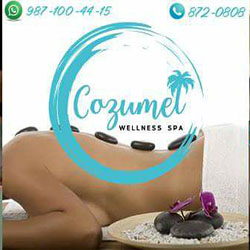







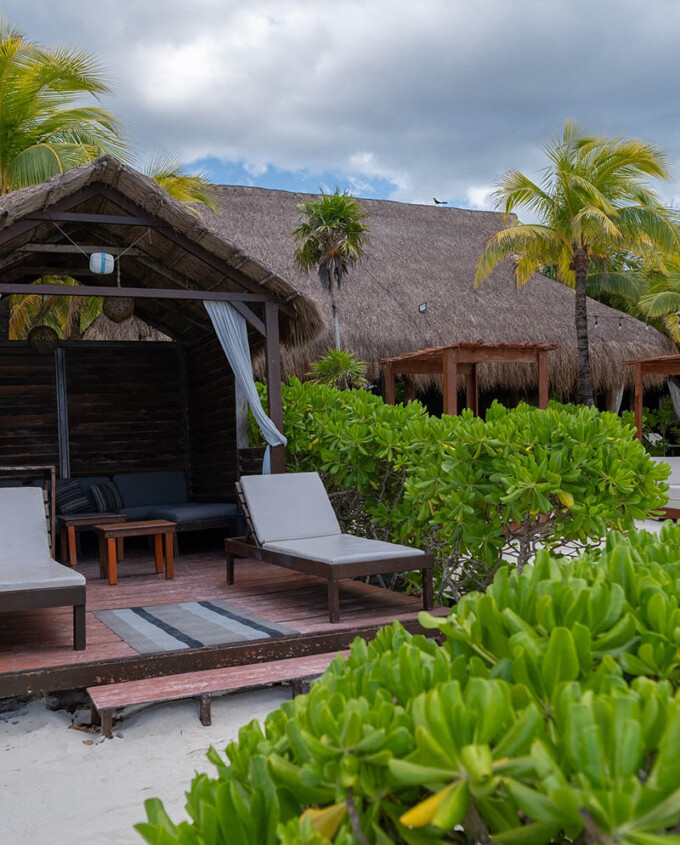
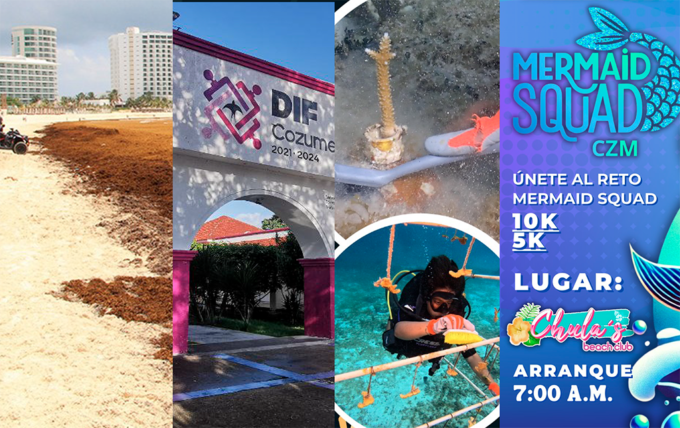

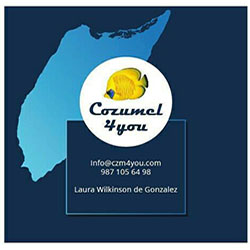

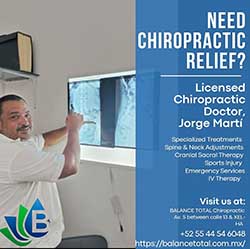





Leave a comment